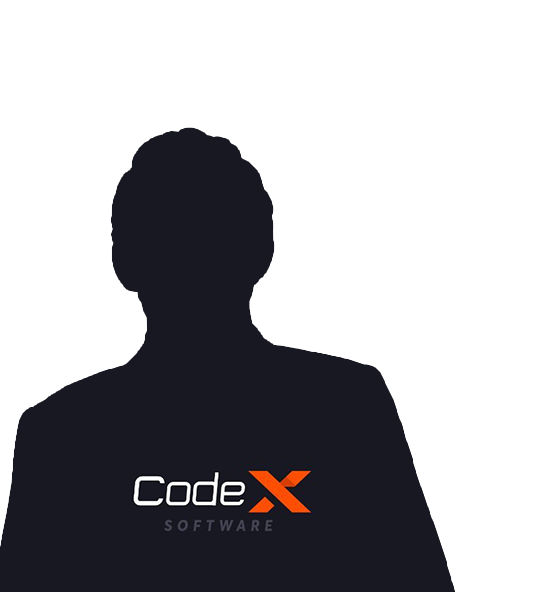Get Free Trial Week Developer Access, Try Before You Hire. Click Here to Claim Now
Introduction:
The development market is stepping up with several technologies entering the play. With this growing market, businesses are expecting to count on development that brings frontend and backend in one place. This is where Full-stack development comes into the picture benefiting businesses in various manners. So what does Full stack development mean?
It covers both front-end and back-end development in one go ending all the hassles to choose multiple development to bring software development ideas to life.
The need for thorough and effective online solutions rises along with the demand for skilled full-stack developers able to oversee every facet of a project from beginning to end.
Here we will cover everything you need to know about Full stack development.
What is Full Stack Development?
Full-stack development involves creating both the front client side and back-end server side. It involves working on the whole stack of technologies comprising a web application, including the database, server, and client-side components.
This all-encompassing approach makes it possible for the many levels of an application to be more smoothly integrated, producing a more coherent and effective end product.
List of Languages and Technologies Associated with Full-Stack Development
Here are some leading languages and technologies that walk in line with Full Stack Development:
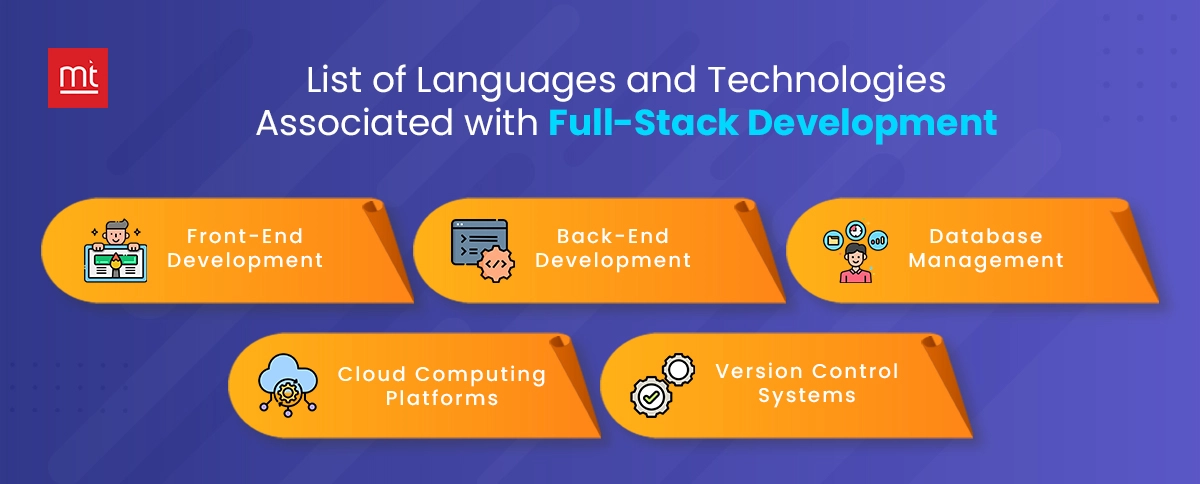
#1. Front-end development
Front-end development is creating a web application that directly interacts with graphic components. This covers a site's design, layout, and interaction. Along with frameworks and libraries such as React, Angular, and Vue.js, critical languages and technologies for front-end development include HTML, CSS, and JavaScript.
#2. Back-End Development
Managing the database, server, and application logic, back-end development centres on the server side of web systems. Along with frameworks like Express.js, Django, and Ruby on Rails, essential languages and technologies for back-end development include Node.js, Python, Ruby, PHP, and Java.
#3. Database Management
Database storage and management handle the data used by online tools. Full-stack engineers must be conversant with NoSQL databases (like MongoDB Cassandra) and relational databases (like MySQL and PostSQL). Good database administration guarantees security, integrity of data, and quick access.
#4. Cloud Computing Platforms
Platforms for cloud computing, such as AWS, Microsoft Azure, and Google Cloud, provide the tools and infrastructure required to build and oversee online apps. These systems provide developers security, scalability, and flexibility, so they may concentrate more on creating the application than server management.
#5. Version Control Systems
Managing changes to the software depends critically on version control systems such as Git and platforms like GitHub, GitLab, and Bitbucket. They monitor changes, support developers' cooperation, and aid in preserving project integrity over time.
What are the Popular Tech Stacks for Full Stack Development?
Some of the popular full-stack development tech stacks are covered here:
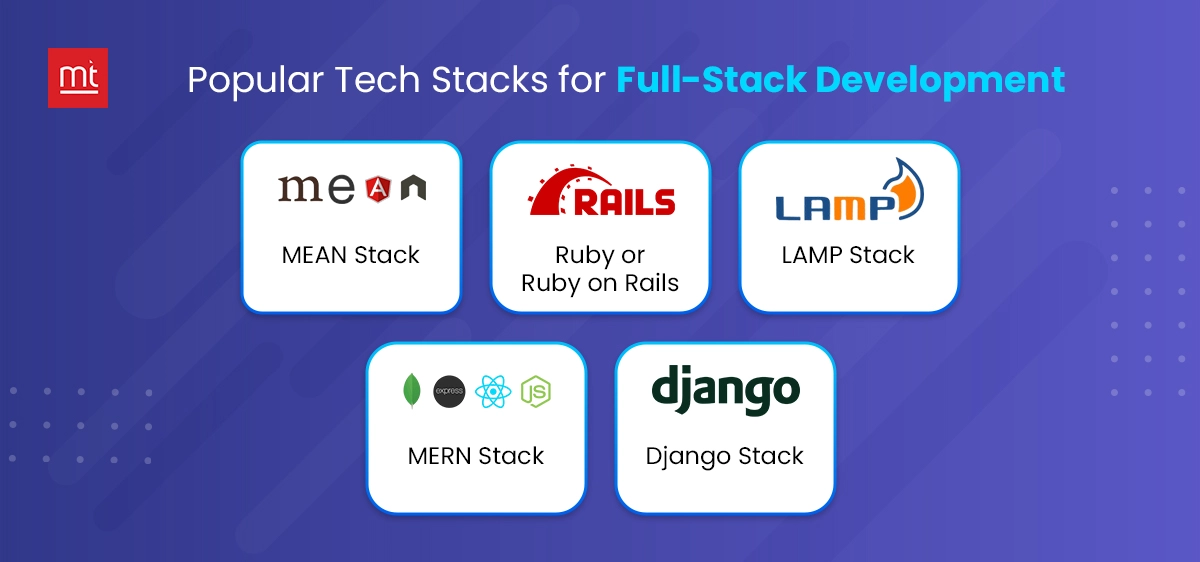
#1. MEAN Stack
MongoDB, Express.js, Angular, and Node.js make up the MEAN stack. Building dynamic, scalable, and maintainable web apps is where this stack is most renowned for efficiency. It lets developers utilise JavaScript all over the stack, streamlining maintenance and development.
#2. Ruby, alternatively Ruby on Rails
The famous Ruby on Rails framework uses the Ruby programming language. Its convention over the configuration method, which accelerates the development process, is well-known. Rails is particularly preferred for its excellent community support and large libraries.
#3. Ruby or Ruby on Rails
The LAMP stack calls for Linux, Apache, MySQL, and PHP. Among the most often used tech stacks for creating online applications, it is also among the oldest. LAMP's reliability, simplicity of use, and plenty of documentation are well-known.
#4. MERN Stack
The MERN stack employs MongoDB, Express.js, React, and Node.js, much like MEAN. React is a potent front-end framework that improves online applications' efficiency and user experience. It is notable for virtual DOM and component-based design.
#5. Django Stack
The Django stack uses the Django framework with Python, Postgres (or another database), and JavaScript for front-end development. Renowned for its "batteries-included" approach, Django offers a complete toolkit and library set for quick development.
Advantages of Full-stack Development
Among the many advantages of full-stack development are:
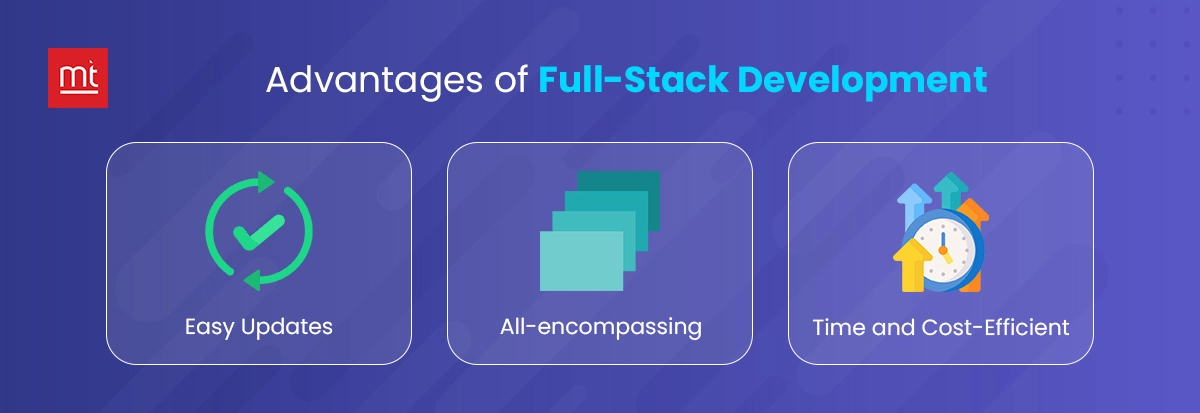
- Easy Updates: Full stack developers provide consistency and lower the possibility of compatibility problems by allowing quick implementation of upgrades throughout the whole program.
- All-encompassing: Full-stack developers have a full awareness of the project, which helps them to provide more coherent and integrated solutions.
- Time and Cost-Efficient: Engaging full-stack engineers may be more affordable than engaging individual experts for front-end and back-end development, optimising the development process and lowering expenses.
Disadvantages of Full-stack Development
Full-stack development has many disadvantages as well:
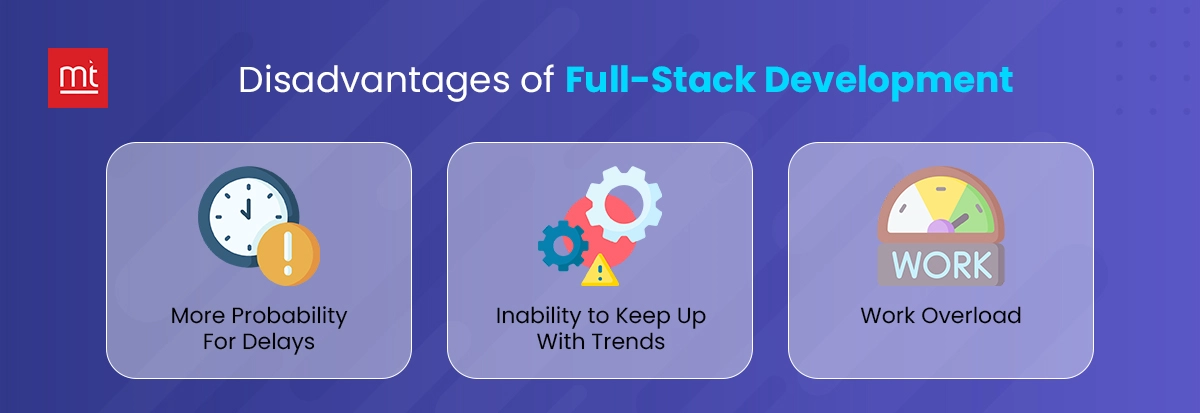
- More Probability for Delays: When the developer is not equally competent in all stack sections, the large extent of work might cause delays.
- Inability to keep up with Trends: Full-stack developers may struggle to keep current with the newest full stack development trends and improvements in front-end and back-end technologies due to the broad spectrum of needed abilities.
- Work Overload: Managing front-end and back-end activities might result in job overload, affecting the project's timeliness and quality.
Steps to build Full-stack Applications
Creating a complete stack application calls to follow various steps:
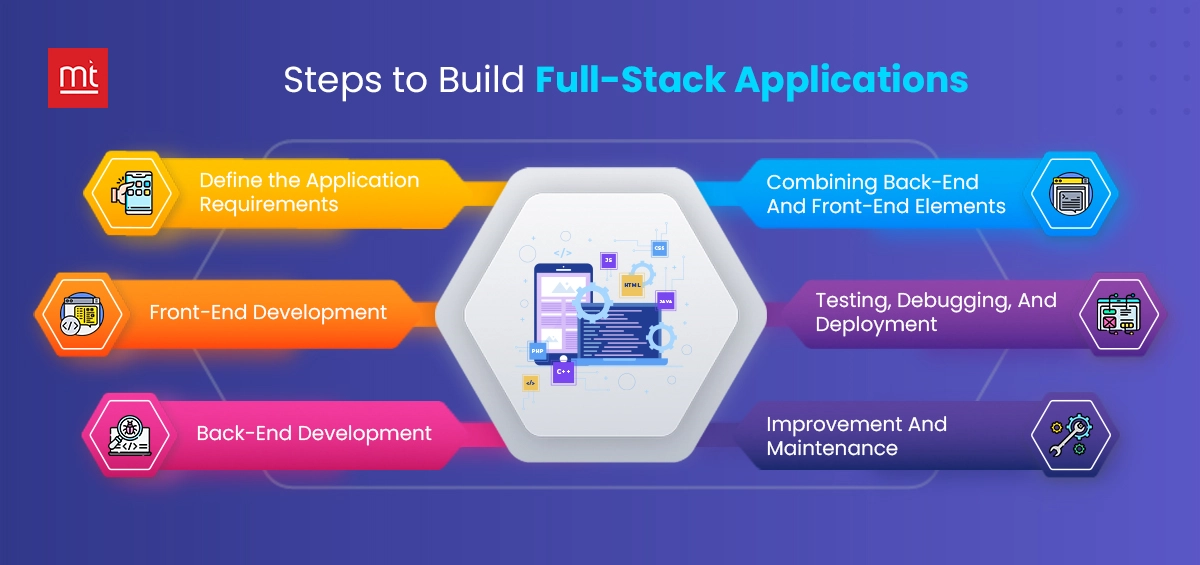
Step 1: Define The Application Requirements
Clearly state the technical needs, target audience, goal of the application, and features. This helps to create reasonable deadlines and guide the course of development.
Step 2: Front-End Development
HTML, CSS, and JavaScript will help you to develop the aspects of user interface and experience. Apply responsive design to guarantee the application performs as expected on many devices and screen sizes.
Step 3: Back-End Development
Create the APIs, database schema, and server-side functionality to handle business logic and application data. Make use of frameworks and libraries meant to improve performance and development effectiveness.
Step 4: Combining Back-End And Front-End Elements
Combine the front-end and back-end parts to guarantee a flawless client-server connection. Get and edit data via APIs; apply authentication and permission systems.
Step 5: Testing, Debugging, And Deployment
Test the program exhaustively for security flaws, performance problems, and bugs. Manual testing and automated testing technologies will help guarantee the application's dependability and strength. Install the program onto a server or cloud platform.
Step 6: Improvement And Maintenance
Track constantly the performance and user comments of the program. Apply updates and enhancements to solve problems, increase functionality, and maintain the program current with the newest technology.
Why Choose ManekTech For Full Stack Development?
ManekTech is a leading software development company with decades of experience developing world-class solutions for businesses. With our expertise, talented developers, and dedication to providing premium solutions, ManekTech is a top option for full-stack development.
Our staff keeps current with the newest trends and technology so that your project benefits from innovative tools and approaches.
From project start to deployment and maintenance, we provide thorough assistance to ensure your application is dependable, scalable, and effective. Our client-centric strategy guarantees that your particular wants and objectives will be satisfied, offering a customized solution that propels your company forward.
Contact us today to hire Full Stack Developers to exceed your development requirements.
Conclusion
Combining front-end and back-end knowledge to provide complete solutions, full-stack development is a flexible and effective method of creating web applications. Although full-stack development presents some difficulties, many companies choose it because of its advantages, such as simplicity of updates and cost-effectiveness.
Subscribe to Our Newsletter!
Join us to stay updated with our latest blog updates, marketing tips, service tips, trends, news and announcements!








